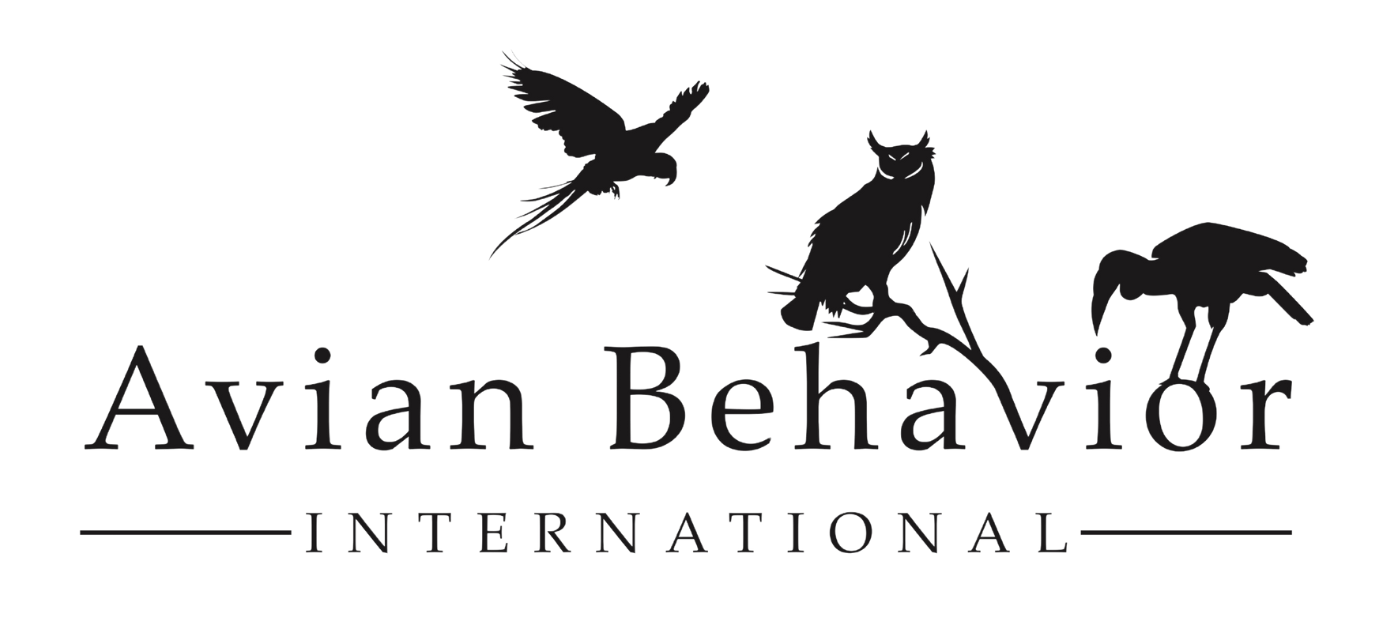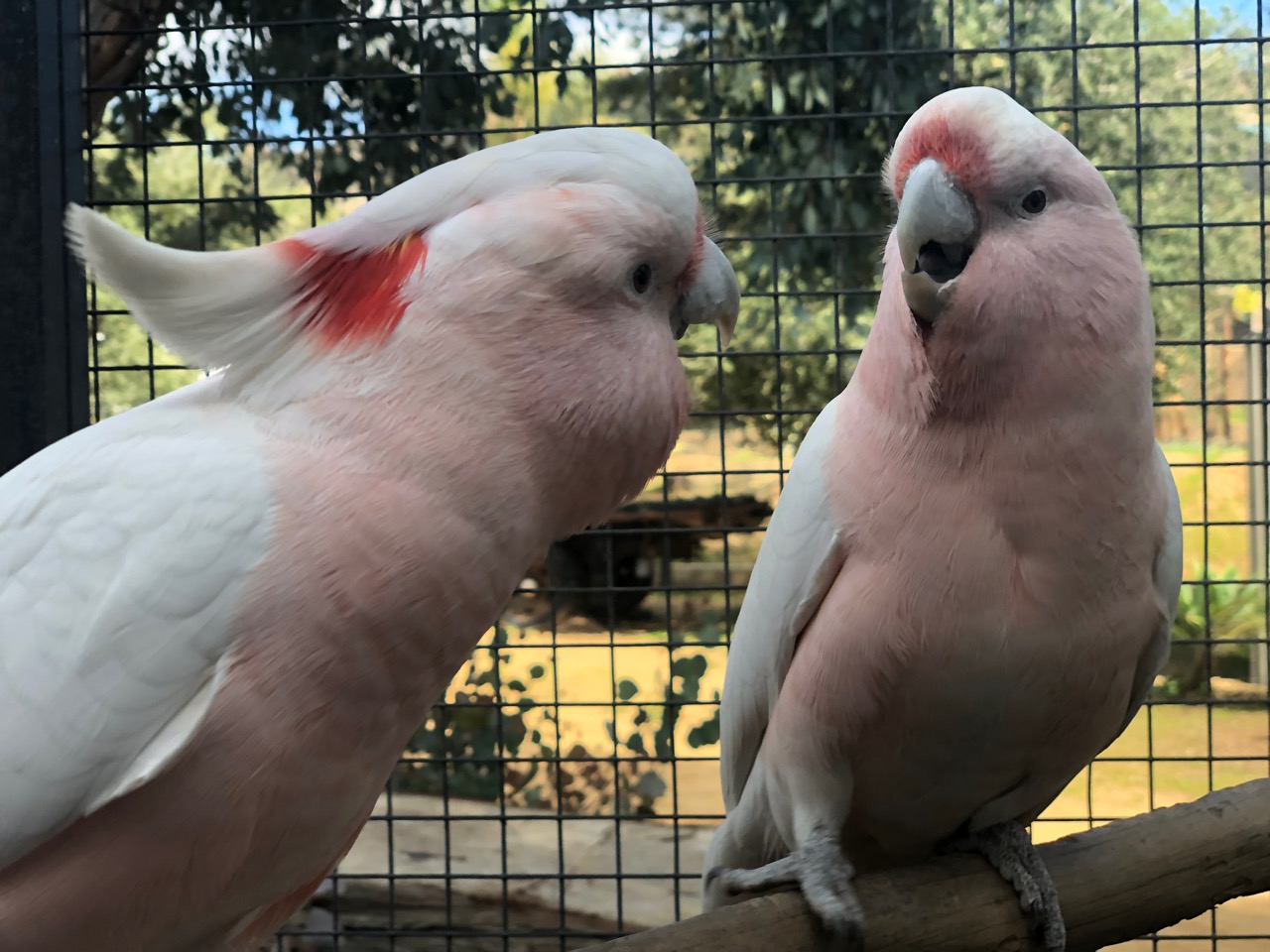
18 May How to Live a Bite Free Life with Your Parrot Part 1
“How do I stop my parrot from biting my fingers and hands?” Heard this before? As parrot behavior consultants and animal training professionals, we have heard that many times.
It’s no secret that parrots can deliver a pretty powerful bite. With a bill that is designed to crack some of nature’s toughest nuts, the engineering on their beaks can produce a painful pinch. That said, whenever someone asks me of one of my parrots, “Does it bite?” I always remind them that anything with a mouth bites, from toddlers to T-Rexes, if we get bitten is a matter of how interact with them.
Is Biting an Inevitable Part of Living with Parrots?
The truth is, getting bitten is not an inevitable part of living with parrots. We can in fact live a life without getting bitten by teaching our parrots that there are other ways of getting their message across. In order to do this, our mindset must be that biting is a form of communication: an extreme form. Parrots deliver a set of precursors in the form of body 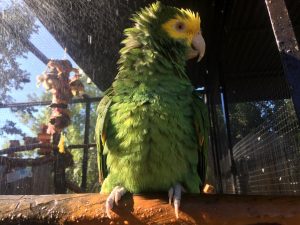 language before they bite, often species specific, sometimes specific to that individual. We will often see flared tail feathers, raised nape, shoulder and leg feathers, pinned eyes, an open beak, sometimes a lowered head, foot stomps, open wings, and perhaps some type of vocalizations like growls or chatters. If we consistently ignore these cues, the bird will eventually stop wasting its time offering them and go right to what works: the hardest bite that effectively gets the offending body part to be retracted or removed. Thus, it behooves us to pay attention to the early signs and respond quickly to those so that our bird can get the desired message across without having to bite.
language before they bite, often species specific, sometimes specific to that individual. We will often see flared tail feathers, raised nape, shoulder and leg feathers, pinned eyes, an open beak, sometimes a lowered head, foot stomps, open wings, and perhaps some type of vocalizations like growls or chatters. If we consistently ignore these cues, the bird will eventually stop wasting its time offering them and go right to what works: the hardest bite that effectively gets the offending body part to be retracted or removed. Thus, it behooves us to pay attention to the early signs and respond quickly to those so that our bird can get the desired message across without having to bite.
Preventing Parrot Bites
If we think of biting as a learned behavior, then the first key to living a bite-free life is prevention. The prevention mindset teaches us to think in terms of what a bird values. How can a bird go from one activity to the next so that >each activity is equally or more rewarding as the last? We are lucky that parrots have a variety of reinforcers, such as food, enrichment, social interaction, baths, and so on that we can deliver to keep our bird from getting bored of any one reinforcer. We can use natural as well as contrived, or arranged, reinforcers to keep our parrot interested in the next activity, even when it is returning to the enclosure so that we can go to work.
It can be really easy to get trapped into thinking that those malleable young parrots are always going to always stay the way they are as youngsters, amicably stepping up whenever we ask and stepping off into their cage or on a playgym to be left alone, we are setting ourselves up for trouble. By teaching them a step up with positive reinforcement, ensuring that each step up results in a valuable outcome, whether it’s the bit of a food, a head rub, a toy, the opportunity to join in an activity, we can vary the reinforcers and keep the step up cue strong. This does not mean we always need to give our feathered buddy food, but we should consider keeping treats stashed nearby so that we can reinforce step ups ever so often with food. I will keep dry treats stashed in attractive covered dishes on side tables and shelves that no one realizes are filled with training treats for dogs and birds. This keeps me from having to keep pockets (and clothes washers!) filled and soiled with animal food.
Positive Reinforcement Prevents Bites
This brings up the question as to when the most important times are to reinforce for stepping up. Each parrot is an individual and as such, has individual preferences. That said, there are a couple of key activities that we typically see biting begin to take place. Knowing this, we can proactively reinforce stepping up before we see challenges. Stepping up from the top of a cage or playgym is one such time, especially when the bird is difficult to reach from these locations. Teaching the bird to come toward our hand for a positive outcome, using treats or other forms of reinforcers, and even recognizing that the opportunity to be set back down to continue playing can be highly reinforcing so that the cue to step up doesn’t always mean that the bird is going to be returned to its cage.
Parrots on the Shoulder
This process is also an important part of shoulder perching safety, if the bird is able to comfortable and safely ride around on a human companion’s shoulder. A parrot can soon learn that the hand reaching up means shoulder time is over, so it will reach out to bite the hand, unless of course we teach the parrot that it can step up for something rewarding 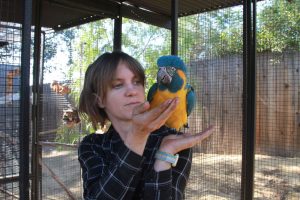 instead. This is a very important thing to keep in mind in order to keep ourselves safe, as a parrot that learns to avoid and bite at hands that close to our heads can also quickly learn to
instead. This is a very important thing to keep in mind in order to keep ourselves safe, as a parrot that learns to avoid and bite at hands that close to our heads can also quickly learn to
displace its frustration on our faces and ears.
Stepping down off of our hands is also an important behavior to reinforce, especially when our good company carries many reinforcing qualities with it. We might get in the habit of peeling the parrot off of our hand or shoulder, but in reality, with a little bit of experience, this practice can lead to biting as soon as the bird starts to see the cage or perch approaching. Adding a couple of simple toys, even a wadded up ball of newspaper with treats hidden inside, or a goodie for stepping off on to the perch goes a long way toward preventing bites and matching high value behavior to high value behavior as the bird moves off its person and into the cage or playgym. This practice can also help the bird accept new perches, surfaces, and rooms and open its boundaries to new behaviors that it was previously hesitant to try.
How the Environment Influences Parrot Behavior
Arranging your parrot’s environment to help support successful behavior is another critical element to a bite-free life. Leave out enrichment items that could be perceived as nesting opportunities, like large boxes, dark corners and hidey holes, and other little cavities. Offering
birds tents is the perfect nesting hole and can lead to an increase in nippiness. Many parrots will find their own nesting 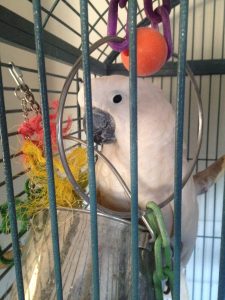 holes when allowed to access closets, beds, and bathrooms. Extra care should be taken if we do see a problem with our parrots spending a lot of time creating dark spaces and in turn, creating a change in their behavior.
holes when allowed to access closets, beds, and bathrooms. Extra care should be taken if we do see a problem with our parrots spending a lot of time creating dark spaces and in turn, creating a change in their behavior.
In one case, I was going out of town for a couple of days and packed my male Moluccan cockatoo’s aviary full of enrichment so that the caregiver wouldn’t have to go in and out of the aviary. When I returned, the cockatoo lunged at me repeatedly through the cage bars and called almost non-stop during the daylight hours. I realized I had foolishly put in a large stainless steel bucket, which he spent a lot of time in. Very carefully, I removed it while someone else fed him on the far end of the enclosure to keep him from flying at me, and within 24 hours, I had my calm cockatoo back.
Wrestling With Your Parrot
Pet parrot owners should also take care when engaging in physical contact with their parrots. Rough housing with baby parrots can be fun. Youngsters may even seem to enjoy rigorous belly rubs and beak their human companions back. While they may play this way in the nest as fledglings, this kind of interaction doesn’t set them up for success as adults. Beak tousling and rough and tumble play can get put your parrot into overexcited mode very quickly and lead to painful bites, as it would in the wild during territorial disputes. Similarly, the way we stroke our mammalian pets like dogs and cats down the back, when replicated to our parrots, in fact simulates sexual behavior. Keeping our pats and scratches to the head and neck area will help avoid our birds seeing as romantic partners, which can cause an extremely problematic chain of events, with biting as just the beginning.
Reading Your Parrot Like a Book to Prevent Bites
And finally, a critical component to preventing bites is watching your parrot’s body language. Body language is your bird’s easiest form of communication with you about what it is likely to do. A parrot leaning toward you or one with its foot raised probably wants to be picked up. One with its head lowered and feathers flared, beak opened is most likely 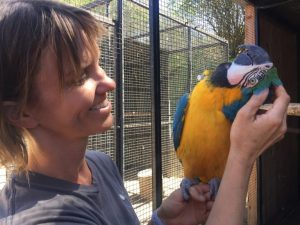 going to deliver a bite. A relaxed parrot has its head and lower abdomen feathers fluffed. It may even have a leg tucked up. If asked to step up, it depends on his learning history if he feels disturbed and will reach out and bite or if he finds value in stepping up. Moving slowly and allowing time for the bird to react to the presence of our gradually approaching hand will give us more information about what to expect and how to avoid being bitten.
going to deliver a bite. A relaxed parrot has its head and lower abdomen feathers fluffed. It may even have a leg tucked up. If asked to step up, it depends on his learning history if he feels disturbed and will reach out and bite or if he finds value in stepping up. Moving slowly and allowing time for the bird to react to the presence of our gradually approaching hand will give us more information about what to expect and how to avoid being bitten.
Again, some parrots are more clear with their body language than others. They may have been taught that offering these cues is ineffective, and it is a waste of time and energy to produce them. Other parrots make it abundantly clear that they are overstimulated or have a history have biting. By responding to these early cues rather than blowing past them, we can teach our feathered companions that we can communicate in less extreme actions and that they don’t have to “yell” at us by biting. This, in turn, reduces the stress level and can reduce the amount of biting exponentially.
What Happens if My Parrot Doesn’t Give Me Warning Signs?
When a parrot doesn’t give a lot of warning signals and goes to bite quickly first, try recognizing the environmental conditions that led to the behavior. Was it feeding time? Was there another bird, animal, or human nearby? Were you petting him for a certain amount of time before he bit? By collecting this data, you can identify the variables that led to the bite and avoid them in the future. The more your parrot bites, the more he bites. The less he uses that as a form of communication, the more he will utilize better ways to communicate.
Living a bite-free life with parrots starts with the prevention mindset. But in some cases, we have work to do when we live with a parrot that already has a habit of biting to get its point across in certain scenarios. In Part II, we will take a deep dive into the topography of biting challenges, and how to change our parrots’ behavior for the better.
Don’t miss parrot behavior and training tips and resources! Sign up for our email list here.
Part 2 of Living a Bite Free Life with Parrots is here.
Do you have a stubborn problem and need some guidance? Check out our supportive online learning community for one on one guidance and feedback at the Avian Behavior Lab.
